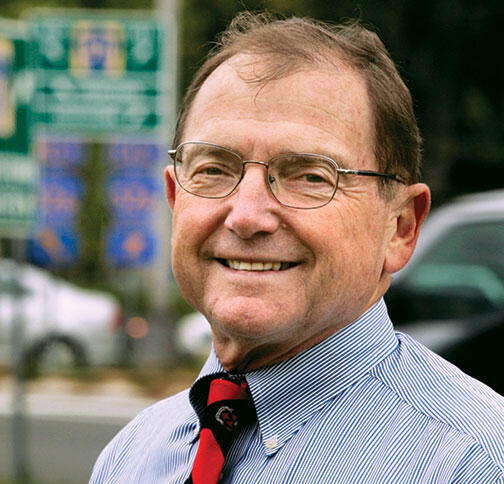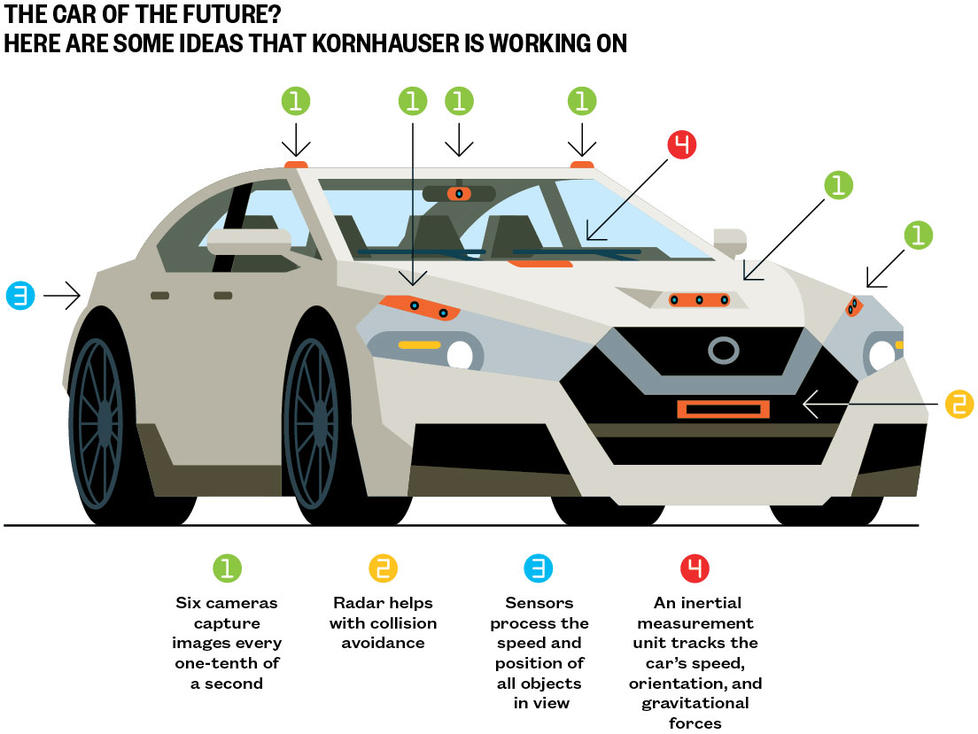Engineering: A Car Without a Driver
The self-driving automobile could hit roads by 2020, says Kornhauser *71
Last April, Google announced that its self-driving electric cars have traveled about 700,000 miles on the open road, including thousands of miles on the streets near its headquarters in Mountain View, Calif., which are more difficult to navigate than highways. The cars detect pedestrians, read road signs, and even understand when a cyclist gestures to make a turn, according to Google
Princeton has its own self-driving car project, led by Alain Kornhauser *71, a professor of operations research and financial engineering. His lab is developing a computer-vision system that uses six cameras to gather images of stationary and moving objects. Collision avoidance remains the most significant challenge for automated vehicles and requires more development, he says.
Under Kornhauser’s guidance, Princeton undergraduates have been incorporating the technology into a fully autonomous car that has competed in the self-driving car-race challenges held by the U.S. Department of Defense, making it to the semifinal round in 2007. Kornhauser expects autonomous cars will be on the road by 2020 and commonplace by 2025: “This is going to transform cities and the way we live.”














1 Response
Richard A. Hesel ’67
9 Years Ago'Future' Car Is Almost Here
I’m afraid Alain Kornhauser *71’s work on the driverless car (Life of the Mind, Oct. 22) has been trumped by Tesla Motors. The car of the future described in this short article is almost here, and with additional advances will be driverless long before 2020. The company’s Tesla Model S P85D’s standard hardware package enables autopilot functionality. Every Model S rolling out of the factory includes a forward radar, 12 long-range ultrasonic sensors positioned to sense 16 feet around the car in every direction at all speeds, a forward-looking camera, and a high-precision, digitally controlled electric-assist braking system. It can park itself in a garage and greet the driver in the morning at his or her front door already programmed for a destination in the driver’s calendar. Better yet, it’s all-electric and consumes no fossil fuels.
Kornhauser and his students might benefit by spending some time at Tesla’s factory in Fremont, Calif.